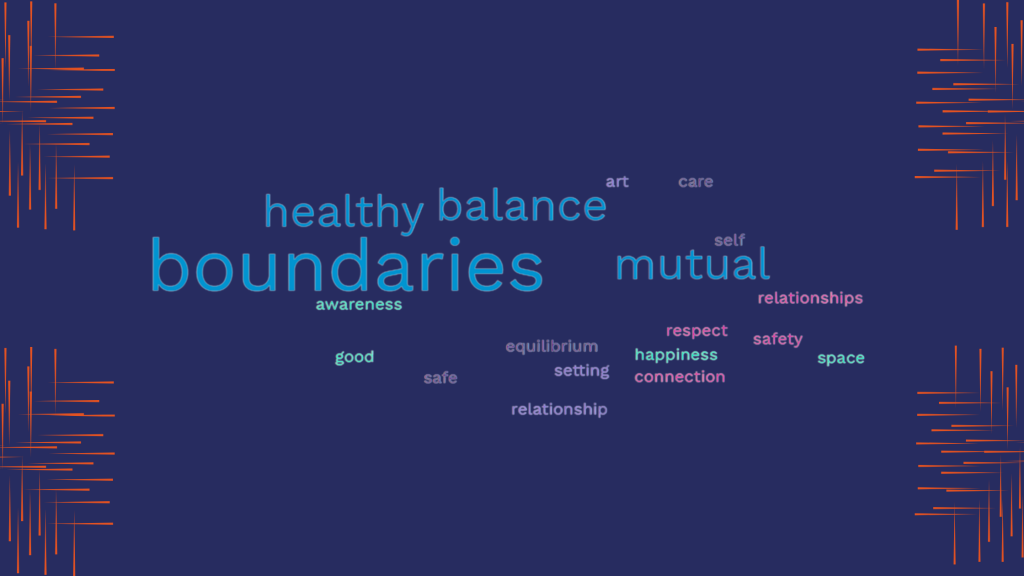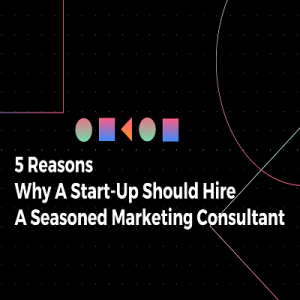
Let us start with a Healthy Boundary Test!
Just take a moment, and see all the statements you resonate with.
- I am thinking of what others want from me before deciding to do what I want
- I am overstretched and over busy
- I am consistently putting my plans on hold because of other people’s plans, no matter what the consequences
- I feel responsible for solving other people’s problems
- I feel I MUST say yes to every request of help that comes to us
- I have trouble saying NO
- I feel guilty if I refuse to help
- I have started to feel the resentment and disappointment for giving too much
- I find it difficult to accept help even when I receive it
- I am so tired of taking care of others that it stops me from fulfilling my own desires
If your answer to some or all of the above is yes, then you are not alone. You are a compassionate, helpful, skillful, caring person, who is doing more than what they can do for others.
You are also very close to getting burnt out and falling behind your own plans, and feeling the burden of resentment.
It is time for you to master the art of setting healthy boundaries.
Why boundaries?
Setting healthy boundaries is an essential building block of life. Unfortunately, this skill is neither taught nor encouraged so one is left to learning by experience and errors, often at a great cost.
The best of the plans of business, life, productivity and success cannot sustain in the absence of boundaries. Surely you can build a great business, and life with your hard work, intelligence, ambition and perseverance, but if you are in the ‘giving mode’ consistently, without creating a balance and cannot find how to have that balance, you are heading towards burn out.
When is the right time?
When you feel you are ALWAYS giving away too much, when you start to feel anger or resentment or find yourself whining or complaining, stop and listen to your inner needs. You probably are not aligned with your needs and you need to set a boundary.
Why setting boundaries is so critical for your long term success and fulfillment?
- For your well being, high self esteem and emotional and mental health
- So you are not getting burnt out and you have time, energy and resources on sustainable basis
- It is an investment, for your mental, emotional and physical wellbeing.
- This framework allows you to include your own plans and dreams in your priorities.
- You create a balance between your needs, and needs of others so you do not become resentful and angry for being the ‘giver’ all the time
What if I suggest that it is time for you to make Self care a strategy for life?
Self care is a collection of tools, techniques, mechanisms and processes that create a space where one can thrive, be at one’s best and feel fulfilled. Awareness, communicating one’s needs, balance of work and personal fulfillment, having time and space for rejuvenation and growth are some of the key elements of self care.
Self care is way beyond the all too common notions of occasional spa, treats and indulgences; from “doing” to “becoming a way of life”.
The self-work for setting healthy boundaries
I invite you to set aside some time and dig deeper in your life, your patterns, and your behavior and start to understand yourself, find what triggers you to succumb to undue pressures and so on.
Make a list of all the reasons you overstretch yourself
Be honest and write down all the possible reasons, justifications and rationale you have heard, used and believed in so far. The reasons could be anything from ‘I can do it faster’ to ‘They need me’ to ‘ I do not want to look selfish’ and so on.
Know yourself better. Ask yourself some tough love questions
Spend some time to ask yourself these questions and see what comes up. The answers will help you to become more aware of your patterns and triggers.
- What does healthy boundaries look like to you?
- What makes you feel triggered to say yes even when you want to say no?
- Are you holding on to some beliefs around boundaries? This could be that “It is selfish to say no to others” or “I must give and never receive” etc.
- Do you fear saying no will make people dislike you?
- Are you afraid that you will upset people?
Bring more self awareness
Five tips to bring more awareness.
Take an audit of your last few months or weeks. You will be surprised with this exercise as this awareness will teach you a lot about yourself.
- Think of the situations where you said yes , where you ignored yourself and took on problems and situations of others. Replay the scenarios to see what happened and what made you say yes.
- Ask yourself – did I evaluate the situation well before saying yes.
- Ask yourself – Did I give another person a chance to do it themselves?
- What I could have done different to lessen my load? You might have taken the problem from their hand in your eagerness to solve it and lessen their burden without even letting them try
- Imagine what you can do different if these situations happen again.
- Look for signs where you are truly needed and when you are not.
Over time, this analysis will help you make a mental map of the situations that activate your ‘savior mode’, or trigger guilt or fear that makes you want to overstretch yourself.
These triggers are a result of your emotions, lifelong beliefs and you may not be aware but watching this pattern will bring awareness to you.
The tactics of setting healthy boundaries
Ask – What is my cost of saying yes to everyone?
Before you accept a new demand, give yourself few moments to ask yourself this powerful question. Make a simple list of what all you will have to delay or drop to take on a new problem. This exercise will help you re-align your priorities and make a better decision.
Ask – What am I saying no to when I say yes to a new request of help?
Another powerful and effective tactic to assess what all you will not be able to accomplish as you accept the new situation new demand and new problem. This is a great way to assess and pick out the most urgent and most important things and create a balance between your priorities.
Manage the guilt trap.
Next time you feel afraid of upsetting people in need, or genuinely scared that your refusal will have dire consequences; go through a check list.
- Have they done enough before it is passed over to me?
- Am I 100% sure that only I can solve their problem? Can another person do this, or can I train them to handle it themselves.
- Is it really necessary for me to say yes? What is the worst case scenario if I say no?
- Can I improve on ‘worst case scenario’ and offer an alternative instead?
Is saying NO too difficult for you? Five tips for beginners.
The NO muscle workout
The key is to be aware of your situation and default response so far. Believe it or not, saying no is a skill you can develop by practicing it more. Here are four proven techniques to build your no muscle.
- Start small
Start by saying no to small tasks or with people you are most comfortable with. This will give you confidence to say it more easily and gradually you can handle the bigger demands too.
- Ask for Time Out
Instead of an immediate yes, and possible regret it, ask for some time to think of the demand. This gives you a window to evaluate the situation and then respond. E.g. you may say ‘Can we discuss this again tomorrow’ Or ‘ can you check with me in one hour’.
- Ask questions to assess
Another indirect but effective technique is to ask the person how urgent it is or how dire the consequences of not doing it are. Also ask them what have done so far or are they sure they have tried all other options before coming to you.
These answers will give you a fair assessment of a situation and very well take care of the situations where others are trying to pass their entire load to you, knowing well that you will accept.
- Create a layer of decision making. Find an ally
A smart way to not succumb to pressure of demands is to team up with a person you trust and use them as an ally. E.g. if you want to refuse for sure but do not wish to say it straight, you may say “ I need to check with so and so because all my time this week is booked with her/him. If I can delay her/his work then I can do yours”. This will again give you time to reflect and assess the situation and then respond.
Dos and Don’ts on Setting Healthy Boundaries
When you are ready to define the boundaries around you, you might feel overwhelmed or even worry about how to change the status quo. Consider these tips when starting.
The do‘s
- Start by having a discussion. Talk about why you want to re-evaluate how you function and why it is important for you
- Explain clearly the need of your framework
- Do it all with kindness but firmly
- Take time to listen to how the other party feels, but please know that others reaction is NOT your responsibility.
- Have a clear framework or guidelines of what will not be acceptable to you going forward and why
- Develop a support system of people who respect your right to set boundaries.
The don’ts
- Do not use this discussion space to vent out your anger or frustration of the past incidents. Please remember that others were not forcing you to do their work or sacrifice your needs.
- Do not feel compelled to justify or apologize for safe space you want to create.
- Do not expect instant acceptance and miracles. At times, people cannot accept a change, especially when they are used to having unconditional access to you.
- Once you have set the guidelines, stick to those. Do not break your own rules even though you may be tempted to.
Credits: Article featured in Bizpreneur Middle East October 2021 Magazine. www.BizpreneurME.com
To view article https://www.flipsnack.com/bizpreneurmemagazine/bizpreneur-middle-east-october-2021/full-view.html

About The Author
Anu Bhatnagar
Publicity, Communications & Visibility Strategist
Director, Collab Function
A humanitarian strategist.
My biggest skill and gift is to use words, spoken and written, to engage with the people and inspire them to become the best version of themselves.
I love to bring facts, evidence and scientifically researched content together for different audiences.
https://twitter.com/anumeera2024?lang=en https://www.linkedin.com/in/anubhatnagar/



